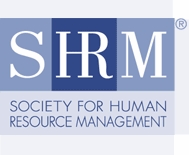 By the fall, HR could have its first officially recognized standard, the first step in a long journey toward standardizing the metrics we all discuss, but interpret and use differently.
By the fall, HR could have its first officially recognized standard, the first step in a long journey toward standardizing the metrics we all discuss, but interpret and use differently.
Online and available for all practitioners to review is a second draft of a proposed standard for cost per hire. An initial version was posted earlier this year. After getting some 50 comments, the SHRM committee that drafted the standard adopted some of the suggestions, made changes, and now, following the rules of the American National Standards Institute, has reopened the comment period.
 Jeremy Shapiro, who led the 42-member taskforce, explained the latest version has “no substantive changes.” “This version,” he said in an email, “contains tweaks and clarifications based on great feedback…”
Jeremy Shapiro, who led the 42-member taskforce, explained the latest version has “no substantive changes.” “This version,” he said in an email, “contains tweaks and clarifications based on great feedback…”
The most significant changes are the inclusion of a definition of sourcing and a note clarifying that the cost per hire standard relates only to full-time employees and not fractional hires. About sourcing, the draft says this: “A subset of the recruiting process, sourcing refers to actions taken to identify potential candidates for employment within the organization.”
Assuming the latest round of comments doesn’t require further changes to the standard, Lee Webster, director of HR Standards for SHRM, says it could be submitted to ANSI shortly after the close of the comment period June 20.
It will then be up to the standards organization to review the proposal and act to adopt it as an official U.S. standard. That could happen by the fall, Webster says, making the cost per hire standard the first HR metric to become an official U.S. standard.
No practitioner or employer is obligated to follow the standard. Those who do, however, will be able to compare their hiring costs to those of their industry, confident that it’s an apples-to-apples comparison. Even for those who don’t apply the standard rigorously, it will still give them a guide to know what HR practitioners agree should be counted.
“I think people will choose to have a more consistent standard,” Webster says.
The CPH standard is the first of several being developed by various SHRM committees. In the works are standards for job descriptions, diversity, and measuring the financial value of a company’s human capital. Developing standards is a long process, but someday, Webster says, there will be a “body of performance standards” measuring HRs effectiveness and giving weight and substance to the pronouncements of corporate HR leaders.
The standards also have the potential to go global. In February, the International Standards Organization accepted a plan crafted by SHRM to develop global HR standards. So far, Webster reports, 25 nations are participating in some form in a technical advisory group. Representatives from each participating country will review every standard as it is proposed. The first one, Webster says, is probably going to be the cost per hire standard.
Interestingly, Iran has expressed an interest in participating, Webster says.